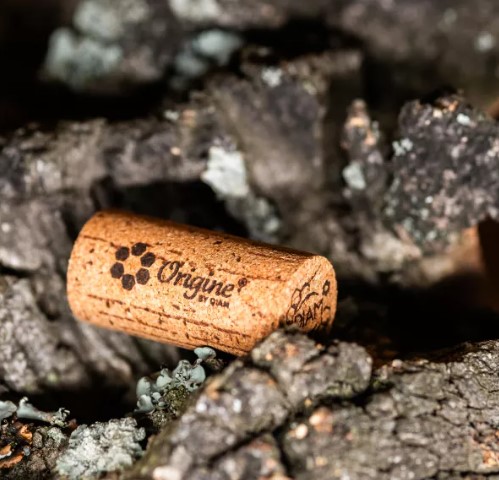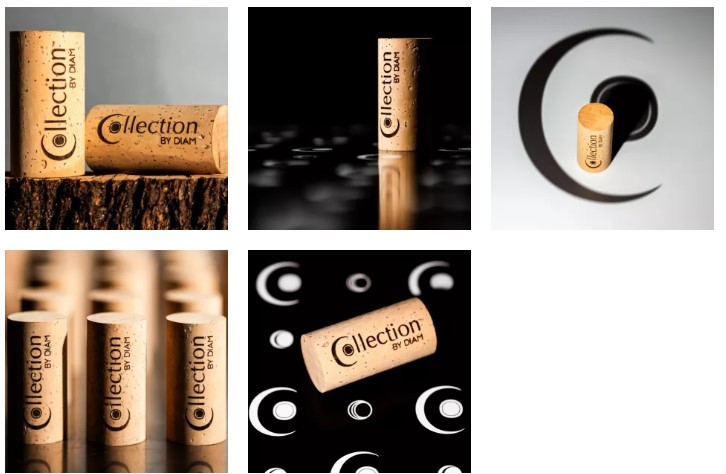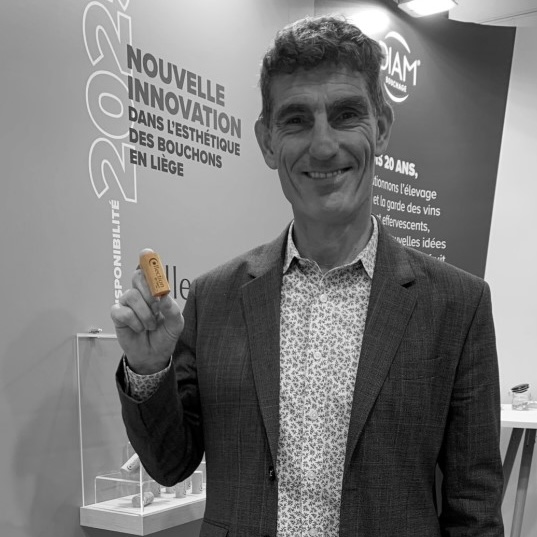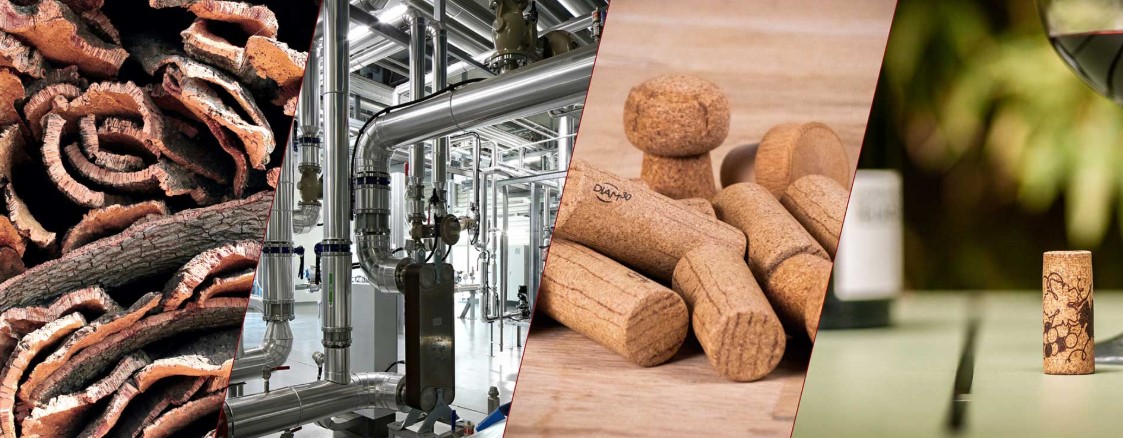Cellar Secrets
DIAM
François Margot
Sales and Marketing Director DIAM
Current Situation
Gerda: What are the main challenges you face in the corking market?
François Margot: As you can imagine, the closures market is closely linked to the wine market. We are present in 86 countries, which gives us a fairly global vision. I started at Diam over 20 years ago, and for the first time we’re facing a truly global challenge: a decline in wine consumption in almost all markets, combined with residual post-Covid logistical effects that are still quite noticeable. This bear market is accompanied by a change in consumption patterns, strongly influenced by growing health and environmental concerns. Since the Covid crisis, we have had to adapt to very changeable markets, with much more rapid variations than before. It is essential in this context to organize our companies to respond with agility, as it is extremely difficult to try and anticipate changes. The speed at which communication and trends evolve is accelerating, and we need to make our structures more responsive and adaptable. This requires us to develop our organizations, our in-house skills and our capacity for innovation.
At Diam, innovation is at the heart of our DNA, and it’s thanks to our pioneering spirit that we’ve been meeting market challenges right from the start. Our brand was born out of a breakthrough innovation in the early 2000s, which resolved the great heterogeneity associated with tubed corks and offered the market a homogeneous cork, both in terms of taste and structure, guaranteeing the absence of cork taint and identical wine evolution from bottle to bottle.
G: Was this new cork immediately adopted by the market?
FM: In some markets, yes, particularly where wines are more sensitive to oxidation, where the heterogeneity of tubed corks is quickly noticeable after bottling in terms of the aromatic evolution of wines. I’m talking about Burgundy, Alsace and Champagne, for example. Diam was adopted immediately because it met an urgent need. Ten years later, in 2013-2014, Diam once again revolutionized the market by offering corks with different permeabilities, thanks to its mastery of gas exchange. In this way, we have given our customers a genuine oenological choice. Depending on the length of time the wine is kept in the bottle, some wines require very little oxygen, while others need more. It all depends on how the winemaker has made his wine and how he wants it to evolve. This was a major step forward, because we are convinced that producers must be able to control the aromatic evolution and identity of their wine over time, even after bottling. Today, we can support this approach by proposing adapted corking solutions, which become genuine oenological tools. This is how we see the wine market today, and even more so tomorrow.
G: How are you positioned in relation to the competition, particularly with regard to traditional corks, synthetics and screw caps?
FM: The distribution of closure solutions has changed considerably over the last ten years. We’ve seen a sharp increase in the use of screw caps in certain countries. Conversely, synthetic closures, which were very fashionable a decade ago, are now in sharp decline. Thanks to our willingness to talk more and more about oenology and oenological tools with our customers, we are clearly positioning ourselves as a partner in mastering the evolution of wines from bottling to the consumer. During this period, Diam has worked in particular on environmental aspects, with an initial carbon footprint calculation as early as 2007, followed by ambitious impact reduction projects. We have worked on several fronts: in terms of forestry, for example, we have brought abandoned French forests back into production, and planted new areas in Spain. We have also worked on controlling our energy consumption and ensuring that it comes from renewable sources. For example, a 20-hectare solar park is currently under construction on our Spanish site. Finally, a few years ago we launched an entirely biosourced Diam solution. The market is looking for natural, sustainable solutions, and it’s essential that we listen to our customers. This range, called Origine by Diam, is fully in line with this approach.

G: What is the origin of the cork you use?
FM: Cork is a natural resource derived from the bark of a particular type of oak tree. There are many varieties of oak in the world, but only one produces this bark. To harvest it, you don’t have to cut down the tree: it can be extracted every nine years from a cork oak, which can live up to 250 years. Forestry is a complex economic model, because when a cork oak is planted, the first harvest only takes place after 25 to 30 years. So it’s not a particularly “attractive” investment in the short to medium term. Nevertheless, we are investing more and more in cork oak plantations in order to preserve this resource over the long term.
G: Cork remains a natural resource. How do you integrate sustainable development into your production chain?
FM: Preserving cork oak forests is essential. On the one hand, this guarantees the sustainability of the resource for years to come. On the other hand, these forests are real carbon sinks: a cork oak, with its longevity of 250 years, absorbs and stores a large amount of CO₂, giving these forests a very negative carbon balance. Around 85% of the world’s cork production comes from Spain and Portugal, but cork also exists throughout the Mediterranean basin. In France, we have rehabilitated forests and even created a “Liège de France” appellation, bringing together cork from Corsica, Roussillon and even Provence. This initiative has met with great success, as more and more customers are sensitive to the local origin of their corks.
Innovation
G: Are you working on circular economy solutions to recycle or reuse your corks?
FM: Cork is a very easily recyclable material. It can be used, for example, to make insulation or decorative panels. However, the main challenge remains collection, which is currently not sufficiently efficient. Initiatives exist all over the world, but on a macro-economic scale, they remain too limited and difficult to make viable. We haven’t yet found an effective solution for large-scale recycling. It’s a problem we need to keep working on.

Future Prospects
G: Do you have any plans to develop other closure solutions besides cork stoppers?
FM: We’ve been in the cork business for over 20 years, and we have no intention of changing. We’ll be proposing a few innovations in the next one or two years, always with a view to offering oenologists additional tools to shape wine according to their vision and expectations.
G: Does the aesthetics of the bottle opening play a role?
FM: It depends on cultures and markets. Some producers design their wine to be consumed within a month, while others make it to be enjoyed 30 years from now. In France, the screw cap does not correspond to the traditional image of high-end wine. In New Zealand and Australia, on the other hand, it was quickly and massively adopted. Today, we see that some producers are returning to cork, sometimes for oenological reasons, sometimes for marketing and image reasons. Without judging the quality, there is a difference in the evolution of the wine between a screw cap and a Diam cork. Last month, we conducted tastings with Australian and New Zealand producers, and we again noted these differences, a choice that the producer has to make. I’m still convinced that the traditional pop of the cork coming out of the bottle is an integral part of the pleasure of tasting a great wine.
G: When did bottle closure habits undergo their biggest change?
FM: 10 years ago!! when we were able to produce corks with different permeabilities. Stopping wine with tubed cork was like trying to control risk and variability. It became an oenological act when we were able to guarantee the homogeneity of the cork and give winegrowers a real choice. It has become a key gesture.
G: Diam is part of a very large group.
FM: Diam is part of the Oeneo group, which also includes Seguin Moreau cooperage and Vivelys (the inventor of micro-oxygenation). The Hériard Dubreuil family (owners of Rémy Cointreau) is the majority shareholder. We remain a family business, even though the group is listed on the stock exchange. This family aspect is very important for the long-term vision and stability of the group. I’ve been with Diam for 20 years and I’m still passionate about what we do. It’s a question of vision and the time we give ourselves to innovate. Even if, in today’s market, we need to speed up this process, because everything moves so fast, I think we’re both big enough to invest in disruptive innovations and still small enough to be reactive and agile. It’s a daily challenge to find this balance. There are around 1,000 people working in the group, 700 of them in bottling. The R&D department employs 15 people across our three production sites: France, Spain and Portugal.
One of our main areas of development is the world of spirits. We manufacture crown corks used for top-of-the-range spirits. The cork part has been produced at Diam for 20 years, but recently, again in response to our customers’ needs, we launched a range called Setop Element.

We recover production residues from our distiller customers. For example, after a whisky has been distilled, some “spent grains” remain. We recover it, process it, remould it and use it as the head of their corks. It’s an exciting project, which has breathed new life into the world of cork-heads, a sector that hadn’t evolved much in 20 years, relying mainly on wood and plastic. Let’s keep innovating !!!
Gerda BEZIADE has an incredible passion for wine, and possesses a perfect knowledge of Bordeaux acquired within prestigious wine merchants for 25 years. Gerda joins Roland Coiffe & Associés in order to bring you, through “Inside La PLACE” more information about the estate we sell.



